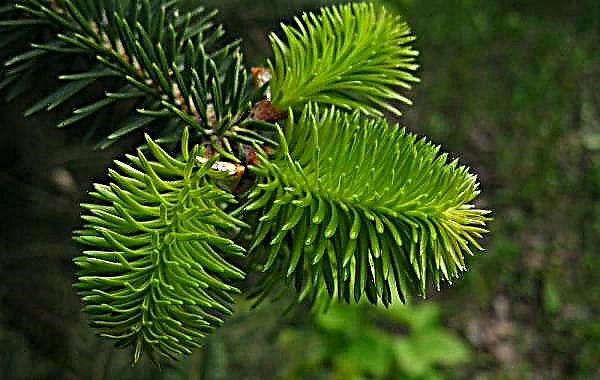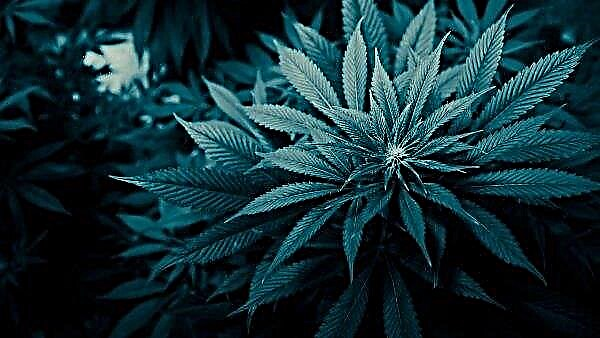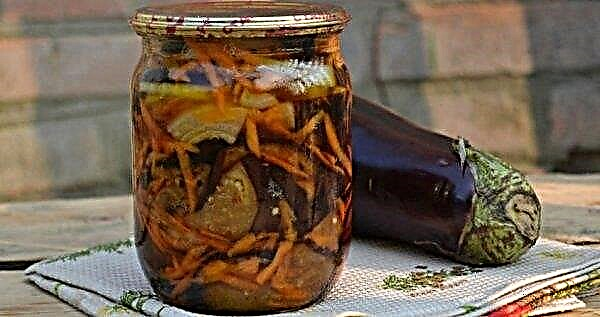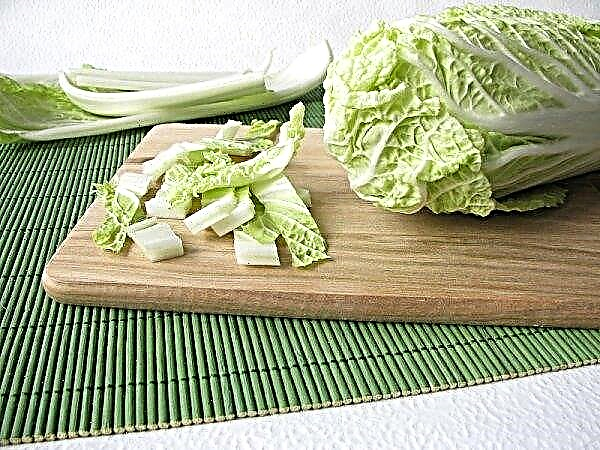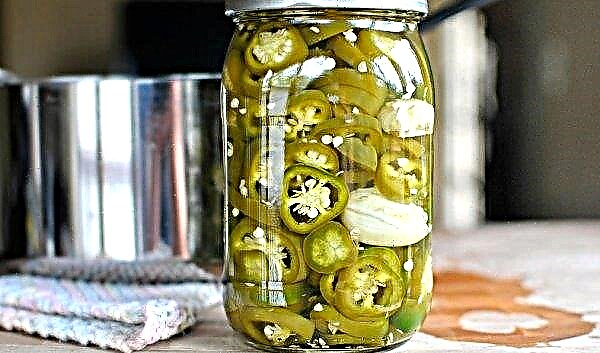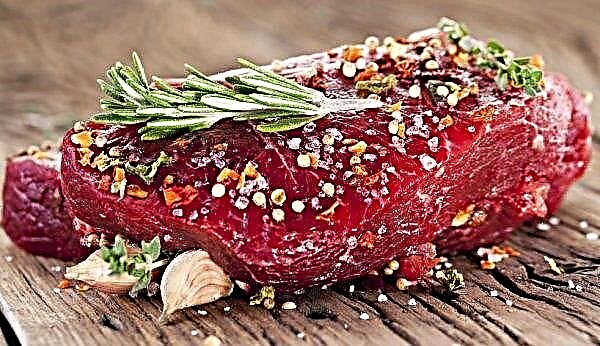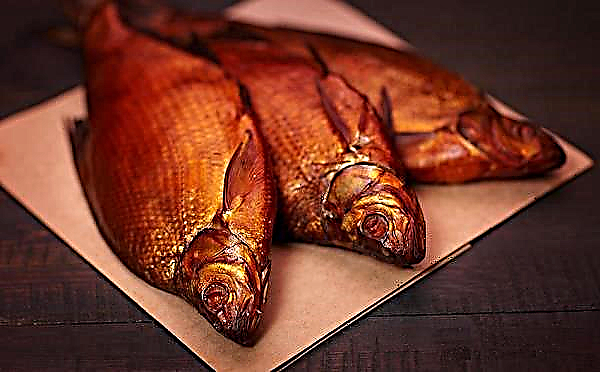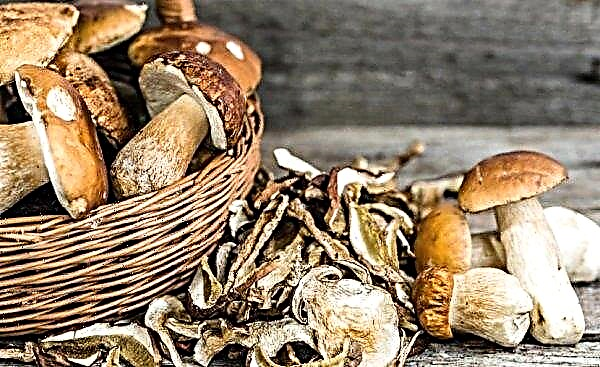Different types of cypress trees are widespread in landscape design, because they look equally good both in single and in group plantings. Not an exception in this matter will be a dull cypress tree called "Teddy Bear" (Teddy Bear), but what kind of plant it is, how to grow it and how best to combine with other plants when creating decorative compositions on the site - read on.
Botanical description of the plant
“Teddy Bear”, “Teddy Bear”, “Teddy Bia” and “Teddy Bear” - all these names characterize one coniferous plant, with tiny and dull needles on the shoots. In the natural environment of growth, it is found in Japanese territory, and with home gardening it can be successfully cultivated in almost all countries except the Far North and arid territories. The height of an adult evergreen shrub does not exceed 100 cm, and the diameter of the plant corresponds to the indicated values. Teddy Bear belongs to slowly growing emerald green conifers, with an increase of not more than a few centimeters per year.
Did you know? The world's oldest cypress grows in the mountains of Taiwan. According to scientists, he is already about 2 thousand years old.
The bark of the shoots is smooth, red-brown in color, without noticeable cracks. Scaly needles - at the initial stages of growing young plants are always bright green, but with age it becomes emerald, which, however, does not affect its high decorativeness. In addition to blunt needles, a peculiarity of the cypress is also unique, fern-like blunt branches, which distinguish it from many other plants of the same species.

Origin of name
The stupid cypress of Teddy Beer got its name because of the similarity of its soft needles to the plush surface of soft toys of the same name, which is still much appreciated by many gardeners. The plant has no more external resemblances to a toy bear.
Landing
Before proceeding to the planting events themselves, it is worth choosing the most suitable place for the cypress in your area. It is best if it is a moderately lit, warm area, while being protected from sharp gusts of cold wind. The composition of the soil in the selected place can be any, the main thing is that it is light, loose and nutritious. On heavy clay or loamy soils, it is better to pour a mixture of high peat, turf, undergrowth and compost, pre-mixed in a ratio of 1: 2: 2: 3 into the planting hole.

This ratio will be appropriate for the cultivation of other varieties of crops, so you can plan the planting of several varietal varieties of cypress trees at once. The size of the landing pit is selected in accordance with the earthen lump of the purchased seedling. Typically, the deepening parameters are 15–20 cm larger than the root system of a young plant with earth adhering to it, but you can prepare a standard hole 60 × 80 cm (depth and diameter) and slightly expand it when planting.
Important! Unlike many other varieties of cypress trees, Teddy Bear does not tolerate waterlogging, so you should not fill his rhizome with water, and neither during planting, nor with further care.
The planting process itself is based on the following sequential actions:
- First, lay a drainage layer of broken bricks at least 10 cm high on the bottom of the landing pit.
- Top with the same layer of prepared nutrient mixture, forming a slight elevation.
- Using the transshipment method, move the seedling from the temporary container to the planting hole and fill the remaining space with soil so that there are no air pockets between the individual roots of the plant (the root neck should remain above the ground).
- Level the ground in the near-stem zone, slightly compact it and water well.
- After the liquid is completely absorbed into the soil, you can mulch the surface with a 5-cm layer of straw, sawdust or pine bark so that the moisture remains in the ground for as long as possible (this will reduce the regularity of watering).
Video: cypress landing
Care
Caring for the Teddy Bear cypress is based on standard measures: watering, fertilizing, loosening and mulching the soil, timely pruning to preserve the decorative appearance of the bush and preventing the development of diseases and pests. However, each of these actions will have its own characteristics associated with the individual characteristics of this particular variety.
Watering and feeding
Teddy Bear belongs to the species of cypress, poorly tolerating excessive soil moisture, which threatens him with rotting of the root system and the death of the entire shrub. To avoid such undesirable consequences, it is worthwhile to observe moderation, introducing liquid not more often than 1 time in 7-10 days, while always focusing on weather conditions and the amount of natural precipitation.
On especially hot days, the interval between procedures can be reduced to 1 time in 5 days, monitoring the state of the upper soil layer (waterlogging should not be allowed). Infrequent sprinkling procedures will be no less useful, but only it is advisable to spray the crown of the plant after sunset and using only water heated per day.

As for fertilizers of conifers, complex mineral mixtures for conifers are the optimal solution, however, the possibility of using organics should not be ruled out. For example, in spring, you can feed the cypress with nitrogen-potassium compounds, use phosphorus fertilizers in the summer, and potash in the early autumn. In addition, foliar treatments with Valagro, Plantafol or Megafol, which are diluted in slightly acidified water according to the directions on the package, will be useful. After planting a plant on a site, the first top dressing should be planned no earlier than 2 years later.
Did you know? A close ancient relative of the cypress is cypress-like cypress. The oldest instance of such a plant was found at the location of the Greek Sparta, and its approximate age is estimated at 3000 years.
Loosening and mulching
For better growth and development of the teddy bear cypress, it is important to organize good air exchange between the rhizome and the environment. It is possible to achieve the desired result by regular loosening of the soil, which is carried out shortly after the next watering and is aimed at swelling the hardened topsoil.

At the end of the process, it is possible to mulch the surface of the near-trunk zone substrate with sawdust, hay, straw or pine bark, spreading the selected material with a layer of no more than 5 cm. This will not only preserve the optimum soil moisture for a long time, but also increase the intervals between loosening, ensuring the air permeability of the substrate for a long time.
Pruning
For the cypress of the Teddy Bear cub, spring sanitary pruning will be especially important, providing for the removal of branches that are frozen during the winter, broken and damaged by disease. However, removing more than 30% of the shoots is still not worth it, otherwise the plant will not be able to quickly recover. The first such event is held a year after planting the crop, when the young seedling has already managed to take root in a new place and build a good root system.
Video: cutting a cypress
If necessary, autumn pruning is also performed, in which case it is precisely aimed at maintaining a high decorative bush. The gardener needs to choose only the long shoots of the current year and shorten them by about 1/3 of the entire length so that they do not stand out from the rest of the branches and spoil the shape of the plant. It is advisable to immediately coat large sections with garden varieties or sprinkle with crushed charcoal to prevent infection of the rest of the culture.
Breeding
In order to maximally preserve all the species and varietal features of the cypress, when propagating it, it is worthwhile to give preference to vegetative methods: cuttings or the use of layering. In the first case, planting material is obtained from apical shoots, cutting 5-15 cm from them.
In the future, the resulting cuttings need to be deepened into a substrate from a mixture of perlite, sand and pine bark (all components are taken in equal proportions), then pour and cover with cut parts of plastic bottles, thereby creating a greenhouse effect. After a few weeks, roots will appear on the cuttings, and after another 2-3 weeks, it will be possible to transplant the finished planting material to a permanent place for growing cypress.

Propagation by layering is suitable only for stunted shrubs, with shoots close to the ground, so meter-tall plants of the Teddy Bear variety can also be propagated in this way. During the procedure, it is necessary to incise the lower branches and place them in grooves pre-arranged in the soil, securing them with metal staples. Having sprinkled the surface of the branches with a substrate, you need to wait for the appearance of your own roots on the layers, after which it will be possible to separate such shoots from the mother plant, and later transplant the formed seedlings to a constant place of growth.
Important! In order to accelerate root formation on the layering and prevent the shoot from growing in the place of the cut, it is worth placing a small pebble into the split, laying the lay down with a cut.
Possible diseases and pests
Like other varieties of cypress, Teddy Bear can suffer from some pests and diseases, so the gardener needs to carefully monitor its growth and development. Of insects, a spider mite, May chafer, aphid and scoop, which cause yellowing of the plant’s crown, damage the rhizome and can lead to the death of the entire shrub, often annoy the culture.
 In the fight against them, special insecticidal drugs, such as Prestige, Aktara, and Antichrush, will be effective, which are best treated twice, with an interval of 40-50 days for the entire growing season (April to September).
In the fight against them, special insecticidal drugs, such as Prestige, Aktara, and Antichrush, will be effective, which are best treated twice, with an interval of 40-50 days for the entire growing season (April to September).
Of the diseases on the bushes of the cypress of Teddy Bear, anthracnose, powdery mildew and a number of other ailments of fungal origin are found, which lead to the softening of individual parts of the cypress and its complete withering.
To protect plants from any of these problems, gardeners use broad-spectrum systemic fungicides, the most popular of which today will be Skor, Ordan, Horus, Ridomil Gold, Maxim. As in the case of insecticidal compositions, it is better to carry out the treatment twice, with an interval of at least 20 days. The dosage and rules of use of any of the above compositions are always marked by the manufacturer on the packaging.
The use of wood in landscape design
Cypress Teddy Beer has a very exotic form, so it is often used in the design of rockeries, rock gardens, alpine slides and just as a decorative element in single or group plantings, various garden compositions. If desired, seedlings can be planted in containers, with their further use for decorating balconies, terraces and even roofs of houses.
 Like all conifers, cypress trees are able to clean the air of pathogens, releasing volatile substances (volatile) for this. This means that in addition to the decorative function, the plant also performs prophylactic, being a kind of strengthening agent: constantly inhaling volatile products, a person only improves his immunity.
Like all conifers, cypress trees are able to clean the air of pathogens, releasing volatile substances (volatile) for this. This means that in addition to the decorative function, the plant also performs prophylactic, being a kind of strengthening agent: constantly inhaling volatile products, a person only improves his immunity.
Simply put, for whatever purpose you grow a Teddy Bear cypress, in any case, the plant will only benefit, and all that is required for its successful cultivation is to follow the recommendations for planting and further care for the coniferous representative. With a little effort, you will surely get not only a beautiful, but also a useful addition to the garden or home.

